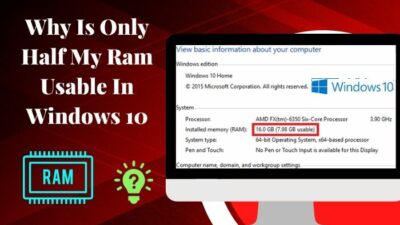The Error 0x80070003 knocks on the door when some update files get missing or become corrupted. The System updater shows that the files have been downloaded but somehow don’t cooperate while installing them.
You may have noticed that the update process freezes roughly at 30% to 50% and displays the error code. It prevents any further updates to your system and makes your computer vulnerable to security threats.
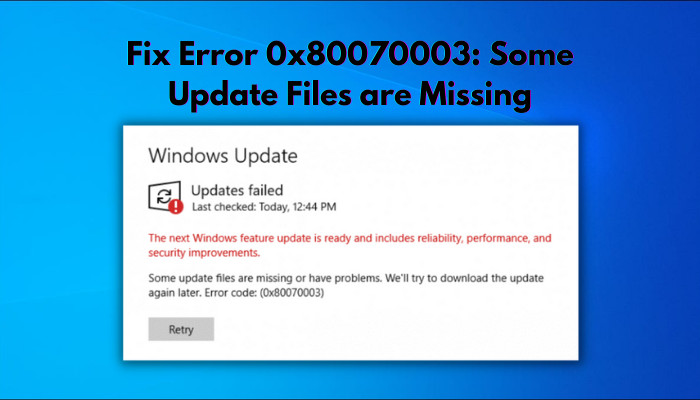
As a tech enthusiast, I have also faced this error a couple of times, and the most annoying part is that it can reappear with future updates. Sounds scary, Nah?
Well, don’t startle anymore. In this article, I’ll briefly discuss why this issue shows up and how to fix the Error 0x80070003 that won’t return ever again.
All You Need to Know about Error 0x80070003
The Windows update process often faces errors with an error code 0x80070003. This error code appears when you upgrade your OS version or perform a regular system update.
Error 0x80070003 completely freezes your update process and prevents all future updates. You may also see a warning that states BITS (Background Intelligent Transfer Service) has halted.
Here are the primary reasons for Error 0x80070003:
Corrupted System Files
Malware is mainly responsible for file corruption. If malware affects your system, it can easily and, in this case, surely corrupt update files.
Stuck Windows Update Service
The update process gets hampered when the Windows Update service gets stuck or crashes unexpectedly. This situation arises when you have low system resources or you own a potato PC that doesn’t cope with the latest features.
Faulty Windows Registry Entries
Corrupt Windows Registry entries may often cause the Windows Update Error 0x80070003. It happens when the OS can’t find the necessary files to update the system. Hence, the system doesn’t boot correctly.
Unstable Internet Connection
Windows updates require a solid internet connection. As long as your internet connection is inconsistent, you most likely end up with an error.
Disabled Windows Update Service
You must ensure the Windows Update Service is enabled to get Windows updates. Otherwise, you will face the Error 0x80070003 while you attempt to update Windows.
Misconfiguration
You may encounter Error 0x80070003 when you don’t have a proper Windows update configuration.
After learning the reasons behind Error 0x80070003, the issue is half solved. Now it’s time to nail the final pin to the coffin, fixing the error.
Check out our post on Windows 11 Not Showing Up In Windows Update.
How to Resolve ErrorCode 0x80070003: Some Update Files are Missing
The simplest way to start any troubleshooting on Windows is by restarting your computer. A restart sometimes resolves any issue as the system gets a fresh start. Make sure to save your unsaved works as restart might remove all unsaved progress.
You should also check your internet connection status to ensure there are no issues. Supposing you are using any LAN connection, test the cable. In case there are any problems with your connection, try switching them.
Another factor that you should check is your system’s time and date. The Windows Update may face errors when your system has an incorrect time and date. So make sure your system has accurate time and date settings.
That goes for the initial checkups. Now it’s time for the main troubleshooting techniques. While these initial techniques don’t resolve the issue, use the following methods.
Here are the methods to fix Error 0x80070003:
1. Run Windows Update Troubleshooter
The most crucial step to troubleshoot this error is running the Windows update troubleshooter first.
As long as the Windows Update feature has any bugs, this method will instantly detect and fix them. Before proceeding to the fix, remove all the peripherals from your computer and reboot your system.
Here are the steps to run the Windows Update troubleshooter:
- Click on the Windows Start icon.
- Select Settings.
- Click on Updates & Security.
- Navigate to Troubleshoot from the left pane.
- Click on Additional troubleshooters.
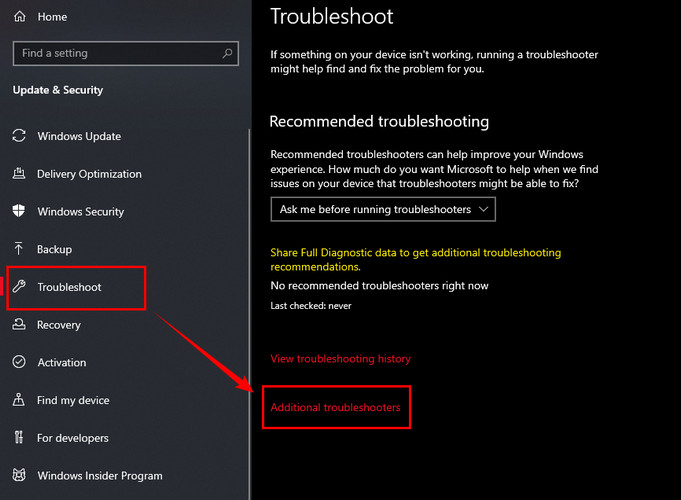
- Select Windows Update under the Get up and running section and click on Run the troubleshooters.
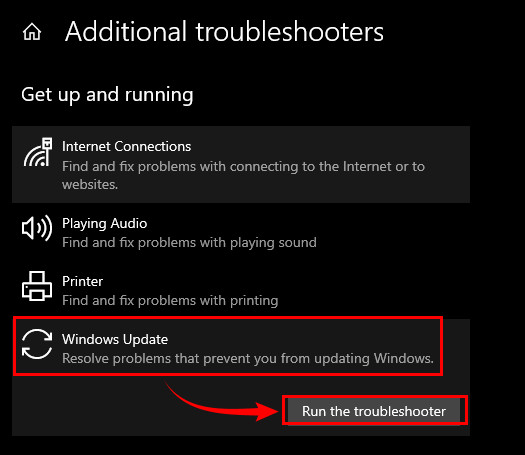
- Wait until the troubleshooting procedure completes.
Now Check for Windows updates again and see whether the issue is resolved or not.
2. Restart Windows Components Manually
In case the troubleshooting of Windows Update doesn’t work out for you, try restarting the Windows components manually.
Here is the method to restart Windows components manually:
Disable BITS, Windows Update Services, Cryptographic, MSI Installer services
- Click on the Windows Start icon and type command prompt.
- Run the command prompt using the administrative privilege.
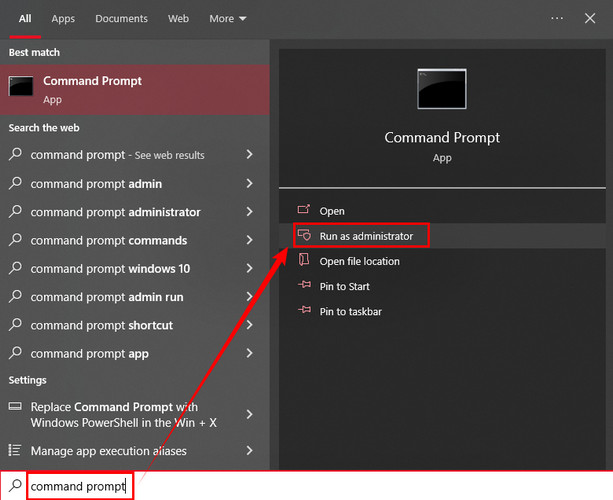
- Type the following commands one after another and hit Enter.
net stop bits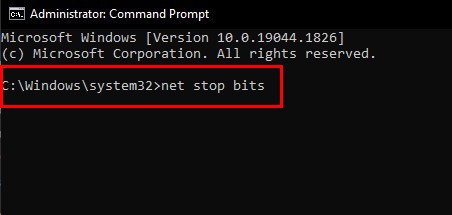
net stop wuauserv
net stop cryptSvc
net stop msiserver
Rename the Software Distribution and Catroot2 Folders
For Windows updates, Software Distribution and Catroot2 folders play a vital role. The catroot2 folder stores the signatures of the Windows Update package and installation of the package when you run the Windows Update. Whereas the Software Distribution folder temporarily stores the Windows Update files till the download process completes.
Here is how you can rename these folders:
- Click on the Windows Start icon and type command prompt.
- Run the command prompt using the administrative privilege.
- Type the following commands one after another and hit Enter.
ren C:\Windows\SoftwareDistribution SoftwareDistribution.old
ren C:\Windows\System32\catroot2 Catroot2.old
Enable BITS, Windows Update Services, Cryptographic, MSI Installer services
- Click on the Windows Start icon and type command prompt.
- Run the command prompt using the administrative privilege.
- Type the following commands one after another and hit Enter.
net start bits
net start wuauserv
net start cryptSvc
net start msiserver
After completing these steps, close the command prompt and reboot your computer. Finally, recheck the Windows Updates.
Check out our separate post on how to Fix cFosSpeed Driver Preventing Windows 11 Installation.
3. Disable Any Third-Party Antivirus
Any third-party apps or antiviruses often interfere with the Windows Update process. As a result, you may see the Error 0x80070003. Any third-party applications, antiviruses, malware, and even firewall often block the Windows update.
The easiest way to solve this issue is by disabling any unnecessary applications that cause the error. In case any important applications such as antivirus or firewall that you can’t live without, disable them temporarily.
When all the conflicting programs are disabled, check the Windows Update and see whether the error persists again or not.
4. Repair and Restore Broken System Files
Any corrupted system files cause plenty of issues in Windows and hamper the basic user experiences a lot. They can also cause the Error 0x80070003 while performing the Windows Update on Windows 10.
The easiest way to check whether your system contains any corrupted files or not is by running Deployment Image Servicing and Management aka DISM. Its self-diagnosis process finds out the corrupted system files and replaces the files with healthier ones.
Here is how you can repair and restore broken system files:
- Click on the Windows Start icon and type command prompt.
- Run the command prompt using the administrative privilege.
- Type the following commands one after another and hit Enter.
- SFC /scannow
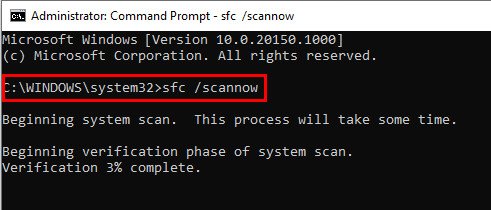
DISM /Online /Cleanup-Image /CheckHealth
DISM /Online /Cleanup-Image /ScanHealth
DISM /Online /Cleanup-Image /RestoreHealth

Reboot your computer and check the Windows Update status to see whether the problem is solved. Just in case the issue still persists, follow the next method.
5. Download Updates Manually
The Error 0x80070003 can occur when your system is installing any cumulative updates. In such scenarios, I highly suggest you roll back your OS version to the previous state and manually update those incremental files from the Microsoft Update Catalog website.
Search the update file name that starts with KB that you want to download.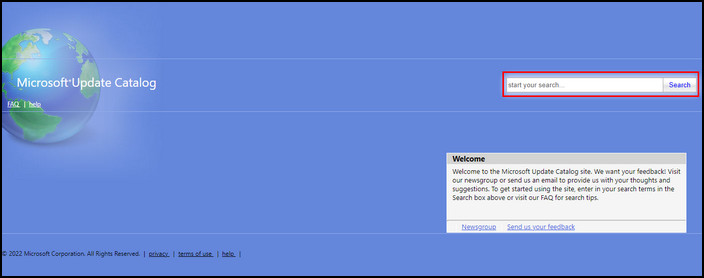 Locate the files that match your system architecture and download it. After downloading the update files, follow the instructions on the screen and install according to it.
Locate the files that match your system architecture and download it. After downloading the update files, follow the instructions on the screen and install according to it.
6. Use Windows Update Assistant
Like the cumulative updates, you can manually download the feature updates as well. You can access those updates from the Windows Update Assistant website.
Here is the method to update Windows using the Windows Update Assistant:
- Click on Update now after visiting the website.
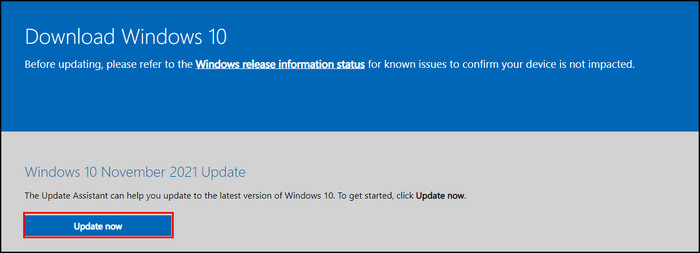
- Run the program after downloading the Windows Update Assistant.
- Click on the Update Now button.
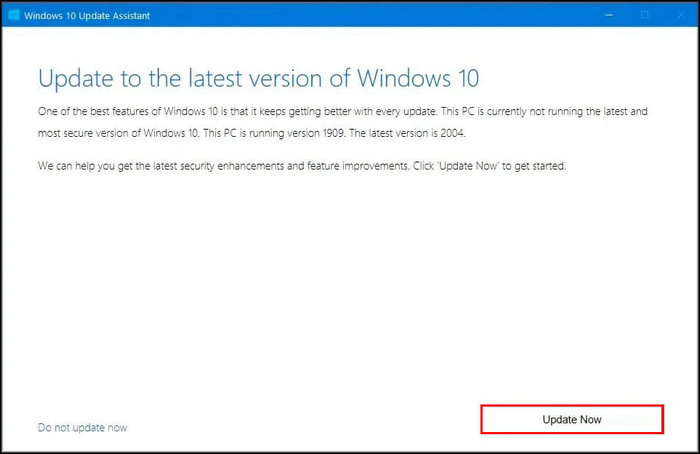
- Wait till the download process completes.
- Restart your system when the application asks you to do so.
- Wait for the update files to get installed.
The Error 0x80070003 while updating the WIndows should get eradicated after manually installing updates. However, there is another update tool for Microsoft Windows that I’ll discuss in the following method. You can use that tool if this method does not work for you.
7. Use Windows Media Creation Tool
Another useful tool to update your system is the Windows Media Creation Tool. It is free to use and has multiple use cases. People mainly use it to burn Windows iso files into removable storage devices (USB flash drives) and make it bootable for Windows installation.
Get the Windows Media Creation Tool from here. Install it in your system first.
Now follow the following steps:
- Run the tool. Accept the terms and conditions.
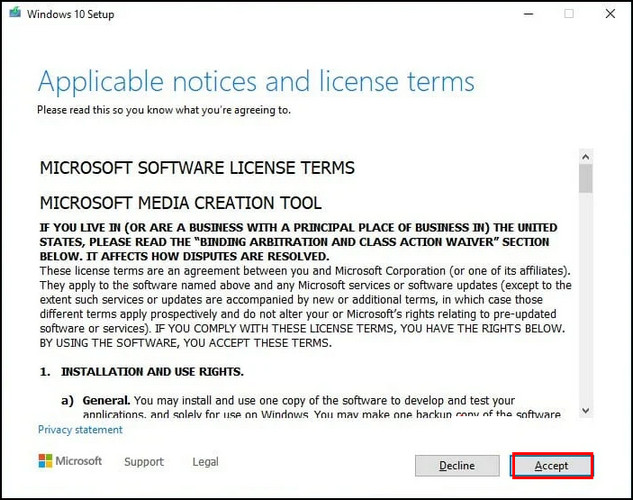
- Select Upgrade this PC now.
- Click Next.
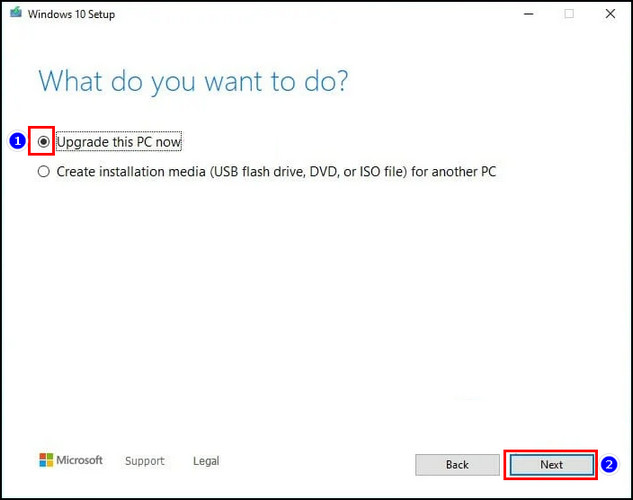
- Wait until the update gets downloaded. (Based on your internet connection, this may take a while)
- Make sure to select Keep personal files and apps when the process reaches the screen where it asks Choose what to keep and click on Next.
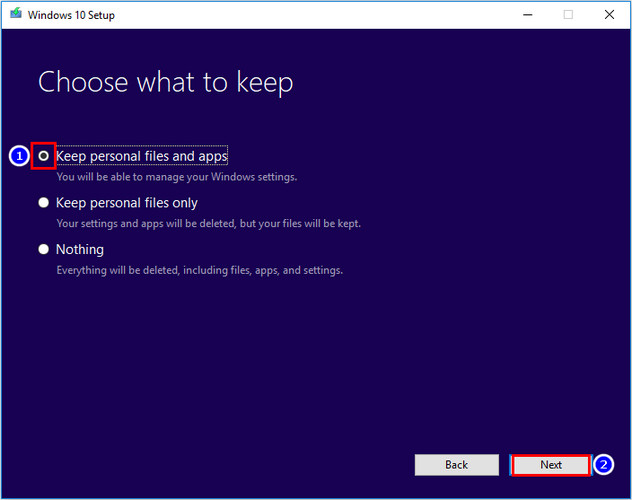
- Follow the rest of the process according to the screen instructions.
Note: Make sure you have a steady internet connection while using the Windows Media Creation tool.
8. Perform a System Recovery
Every Windows user should take a system backup of their current settings. For instance, if anything goes wrong with your system, you can restore it without losing any settings. I believe you have also created yours too.
You can use that system restore point to revert to the previous state to avoid Error 0x80070003.
Here are the steps to recover Windows from a system restore point:
- Click on the Windows Start icon and type control panel.
- Open Control Panel.
- Click on Recovery. (Change the View by: option to Large icon whenever you don’t see the Recovery option)
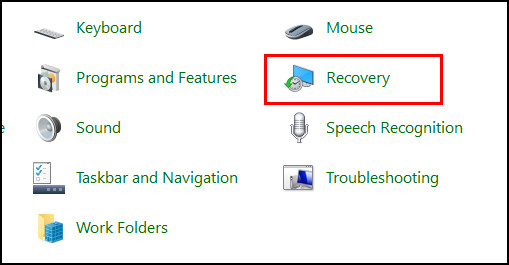
- Select Open System Restore.
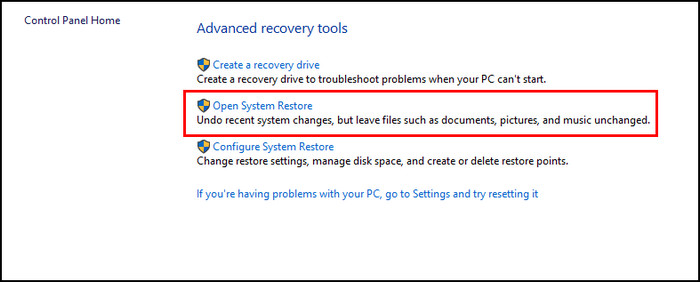
- Click on Next.
- Select the restore point and click on Next.
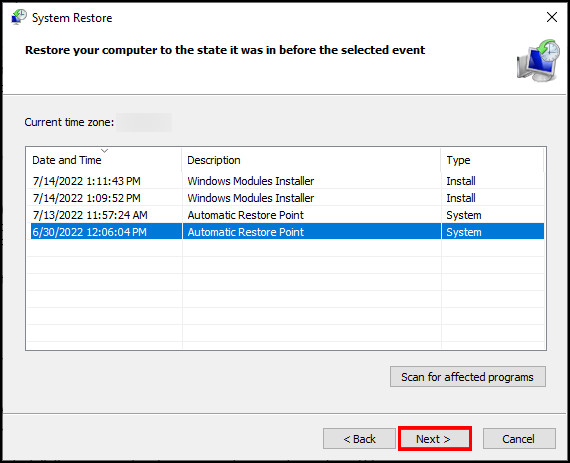
- Wait until the recovery process ends and click on Finish.
9. Reinstall Windows
If nothing goes on your side, the last thing you can do is perform a fresh Windows installation on your system.
Warning: Don’t use any modified Windows iso file. It contains bugs and malware that can cause severe damage to your system.
When you get a fresh Windows installation, your system becomes malware and error-free. This method is your last resort to fix this issue, for sure.
Follow our guide on how to Disable Caps Lock Notifications in Windows 10/11.
Final Thoughts
To fix the Error 0x80070003, run the update troubleshooter on your Windows System. Then restart the update components manually, disable your antivirus, repair corrupted system files, and install problematic updates after downloading manually. In case the error persists, recover or reinstall windows.
There you go! Apply those methods and resolve the Error 0x80070003: some update files are missing.
Let me know in the comment section which method works for you, and feel free to ask any questions as well.

